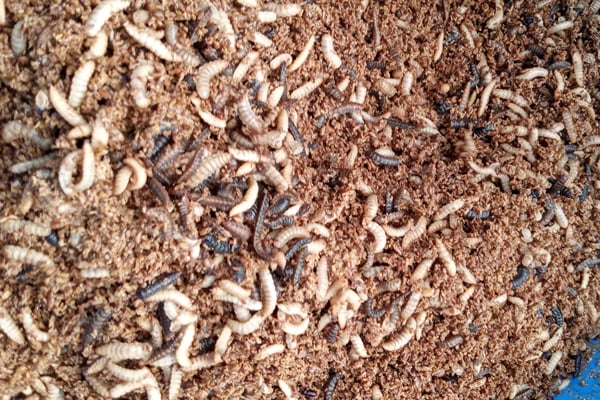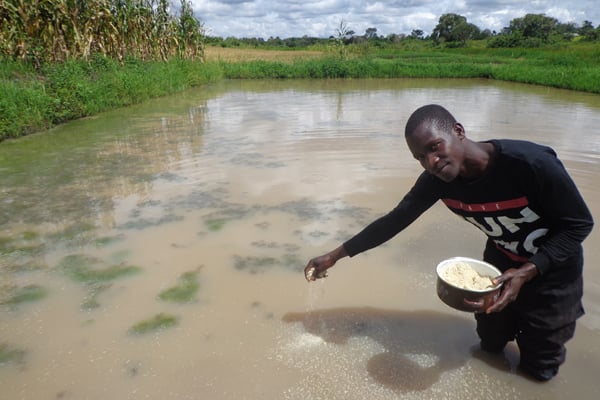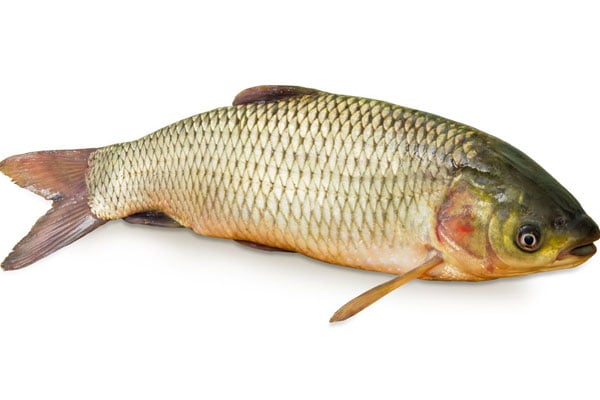Agronomists make fish feed from insects

Black soldier fly lavae is rich in proteins. Photo / Lominda Afedraru
What you need to know:
- However, scientists at Aquaculture Research and Development Centre in Kajjansi, having realised the scarcity of silver fish which is the major protein mixture in fish feed, decided to embark on studying breeding of black soldier for processing its larvae as fish feed for fish farmers across the country.
A number of fish species feed on insects in their natural habitats deriving quality and fatty acids that boost fish growth.
Scientists have proved that insects such as black soldier fly larvae have potential to be used as source of protein in fish feeds.
Background
Much as a number of farmers are adopting the use of insect larvae as feed especially for their poultry, most aqua culture fish farmers in the country depend on fish feed processed from silver fish as protein ingredient.
However, scientists at Aquaculture Research and Development Centre in Kajjansi, having realised the scarcity of silver fish which is the major protein mixture in fish feed, decided to embark on studying breeding of black soldier for processing its larvae as fish feed for fish farmers across the country.
Black soldier larvae
Dr Margaret Anyu, aquaculture nutritionist says the black soldier fly larvae contains up to 55 percent protein with amino acid profile comparable to that of fish meal made from silver fish.
The larvae are highly digestible making the nutrients from larvae readily available to boost fish growth.
The insects are known to be calm and are not toxic and do not have any history of causing and transmitting diseases.
They are prolific breeders with a short life cycle and can be grown in large quantities using waste organic material. They contain protein, vitamin, fat and required minerals relevant for fish to grow.
Trapping flies
According to Dr Anyu, adult flies are found in the atmosphere and they fly when the weather is warm. They are usually attracted by smelly rotten organic waste materials.
Therefore, in order to obtain them in large numbers, it is advisable to place containers in an open area. This can attract the females to come and lay eggs on such rotten matter.
The females normally lay eggs in dry gaps found on surfaces of organic material which they also use to feed on by sucking moist produced from such a matter. This therefore means that black soldier breeders are advised to place a piece of moist sponge in a container to provide drinking water for the females that have come to lay eggs. Once the eggs are sighted, they are transferred to fresh organic material where they can hatch into larvae which must be allowed to grow in three weeks’ time into pupa.
The pre-pupal stage can be directly be fed to fish or used in fish feed as protein source.
Agronomy
Farmers intending to grow black soldier fly to obtain its larvae can do so in trays filled with moist and aerated organic material to provide oxygen to the larvae. By aerating the organic material, this will control build-up of ammonia arising from decomposed organic materials which may end up the larvae.
Breeders must ensure that at least 10 percent of the pre-pupae should be allowed to grow into adult flies which will reproduce to maintain stock of the flies. It is important to feed the larvae properly because at a certain stage they will stop feeding but depend on what they were fed on earlier.
The pupae usually hatch into adult flies in two to three weeks and before beginning to lay eggs. After laying eggs, in five days they die off.
It is important to provide a few pieces of material with thin gaps placed on top of the organic matter for the female ones to lay eggs and the cage should be exposed to sunlight in order to stimulate the flies to mate.
Larvae as fish feed
Dr Anyu explains that fish can either directly feed on black soldier larvae or it can be processed into fish feeds that are fed to the fish in the ponds.
When processing fish feed using black soldier fly concentrate, it is important to note that the larvae is dried and crashed into powder form. It is mixed with other ingredients such as wheat bran, sunflower cake, cotton cake and soy cake which are source of carbohydrates providing energy to the fish.
Dr Anyu and her team have been carrying out this experiment for two years now and have proved that the fish feed using black soldier fly is viable because the insects are there in the wild.
Trials have been at the research institute in Kajjansi and farmer based experiments in cage fish farms in Mukono.
The team is now at the process of working out certifications to enable massive production and they are calling upon the private sector to come on board and take up the technology for onward transmission to aquaculture fish farmers across the country.
Dr Anyu contends that plant based fish feed are not good enough for fish because the protein content is less. Besides it is not economical to feed fish on silver concentrates because it is a delicacy to humans and since the demand is now high, it is important to contain what is available for human consumption.
The team has been engaging farmers in the sensitisation exercise and are hoping to reach out to more farmers once the technology has advanced to them.
Fish feed processing
Research assistant Lawrence Opio explains that the steps of fish feed processing cut across the various types of fish feed that are availed by aquaculture fish farmers across the country.
Different fish species have different protein requirements therefore tilapia and cat fish which are bred by aquaculture fish farmers in the country require fish meal with about 60 percent of protein for their growth.
Apparently silver fish with higher protein has higher demand with market price ranging between Shs2,500 and Shs7,000 per kilogramme depending on the market areas which most fish farmers may not afford.
It is the reason the team came up with this innovation because the figures show that currently the country requires 1.5 million tonnes of fish feed in order to produce 1.5 million tonnes of fish using aquaculture fish farming per annum yet there is only 1,000 metric tonnes of fish feed production at the moment.
The Institute has a fish feed processing machine with capacity of producing 8 tons of feed per day.
Formation
According to Lawrence Opio, it is important to have the correct mix of fish meal ingredients in order to process quality meal.
The first step is to formulate the diet comprising ingredients such as wheat, cotton and sunflower and soybean cake. Then silver fish or black soldier concentrate is added into it at the appropriate volume.
The mixing and grinding is done using the grinder and properly mixed. Then blending additives which contain palatable flavour can be added.
The crushed powder is then precooked in a steam in order to make it palatable to the fish.




